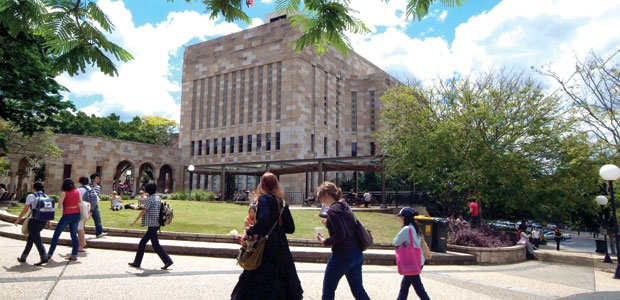
Source: Alamy
As the state disinvests, Queensland is securing the future of its student experience and research by diversifying its income streams, writes Peter Høj.
2014 has become a watershed year for Australian universities, as people are talking about higher education policy and thinking about what they and their society might be prepared to pay for various kinds of degree.
It is uncommon for higher education to ignite passions here beyond the circles of academe, students and trade unions, so as a university leader I welcome the breadth of debate. The catalyst was a federal government proposal, unveiled in the May Budget, that had an emphasis on deregulating undergraduate fees and overhauling the student loan system.
Much of the commentary has been peppered with references to global rankings, in which Australia performs well, for a nation of about 23 million people and just 41 universities. But any discussion about paying for higher education is incomplete without a debate about funding research.
There are a plethora of reasons why this is so, and in this forum it hardly needs stating that research inputs and outputs significantly influence the rankings.
The Australian universities in the upper echelons of global league tables, including the Times Higher Education World University Rankings, are all research-intensive, but our overall national position is far from assured. In fact, further displacement of Australian institutions from the top 100 now seems inevitable, due not to any diminution in quality but rather to the rise of stars in nations where research investment is comparatively bounteous.
Our need to remain attractive as a research collaborator and a destination for fine students sharpens the imperative for our universities to maintain their edge. While it is true that the ascending powers of global higher education, particularly in Asia, are often regarded as competition for Australia, they must also be respected as collaborators and sources of talented students. This is by any measure a positive way forward for Australian universities and – more importantly – the people we serve.
Another reason to fight for decent research resources is that research-enhanced cultures present richer opportunities to students at all levels from all over the world.
Learning environments that champion the application of excellent research to answer difficult questions foster graduates capable of tackling big and complex problems. They are exceptional assets to society and industry. Yet despite the manifest benefits of a well-educated population, there is a general pattern in Australia of governments contributing an ever-decreasing proportion of university funding.
Partly in response to this, but more importantly because partnerships can deliver terrific results, my university and many others are determined to diversify our resource base.
The University of Queensland has achieved this to the extent that our research income from non-government sources grew by 18 per cent last year. It is not a coincidence that in 2013 we launched an industry engagement strategy that includes the goal of doubling research income from non-state sources between 2012 and 2020.
In addition, for most of 2014, Queensland has been tracking as the number one Australian institution (fifth or sixth in Asia-Pacific) in the Nature Publishing Index. I’m encouraged by what I sense to be a growing appreciation by firms and not-for-profits that excellent university research can lead to beneficial products and services. There are many notable examples arising from Queensland’s research alone, including the cervical cancer vaccine Gardasil; technology used in most of the world’s magnetic resonance imaging machines; and the Triple P (Positive Parenting Program), which has helped about 7 million families in more than 20 countries.
Just as businesses that fund research deserve outcomes, so do philanthropists. Again, I am heartened by developments in the Australian landscape, where there have been a number of far-sighted donations to universities, including some wonderful examples of individual alumni donating to their alma mater, along with corporations investing in the national pipeline of prosperity.
My sense is that many among my generation of baby boomers have done better than we had once thought possible thanks to education. Many such people intend to leave a positive legacy, and so do many younger graduates who are now demonstrating magnificent generosity and foresight.
These attitudes are raising some Australian universities’ fundraising ambitions, despite a lack of endowment tradition here. Queensland, which owes much of its success to philanthropy and intelligent leveraging, is one of a number of institutions working to foster that tradition. The target is a bedrock from which we can provide an ever-improving experience for students from all over the world, great graduates who are sought after by discerning employers, and research that yields outstanding outcomes for a better world.
Peter Høj, president and vice-chancellor, University of Queensland
Register to continue
Why register?
- Registration is free and only takes a moment
- Once registered, you can read 3 articles a month
- Sign up for our newsletter
Subscribe
Or subscribe for unlimited access to:
- Unlimited access to news, views, insights & reviews
- Digital editions
- Digital access to THE’s university and college rankings analysis
Already registered or a current subscriber? Login